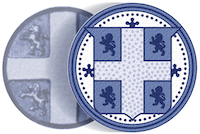Samuel Peter Austin
Submitted by Steve Thompson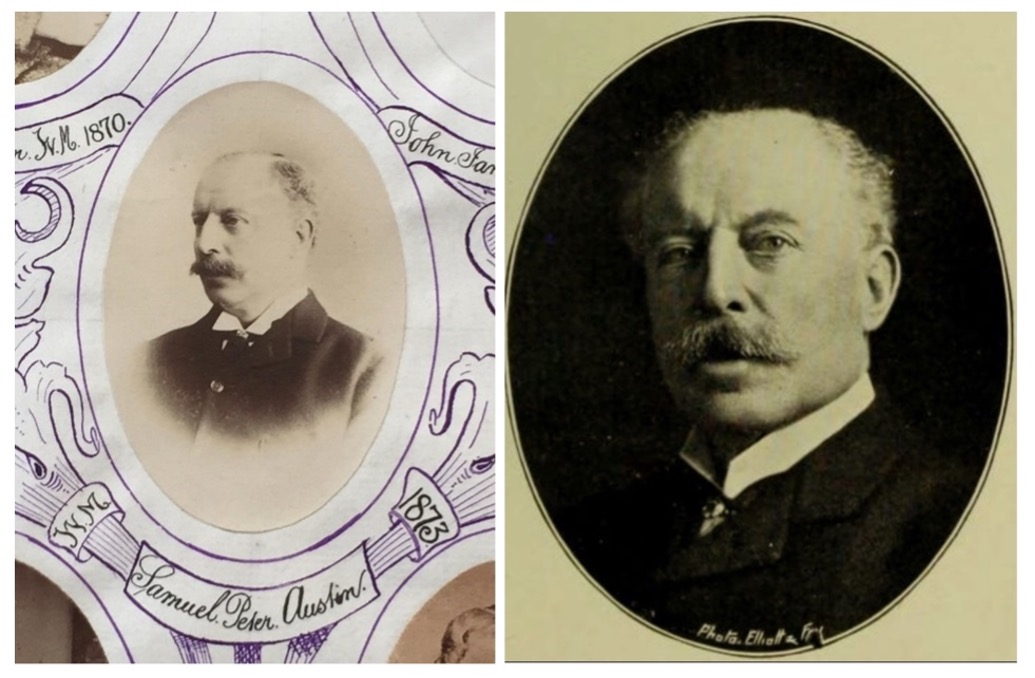
Samuel Peter Austin, Junior (1842 -1925)
One of the River Wear’s most famous shipbuilders, Samuel Peter Austin, was initiated into Palatine Lodge, No 97, on March 27th, 1868. He played an active role in the Lodge, becoming Worshipful Master in 1873, Treasurer in 1875 and received the honour of Past Provincial Junior Grand Warden (PProvJGW).
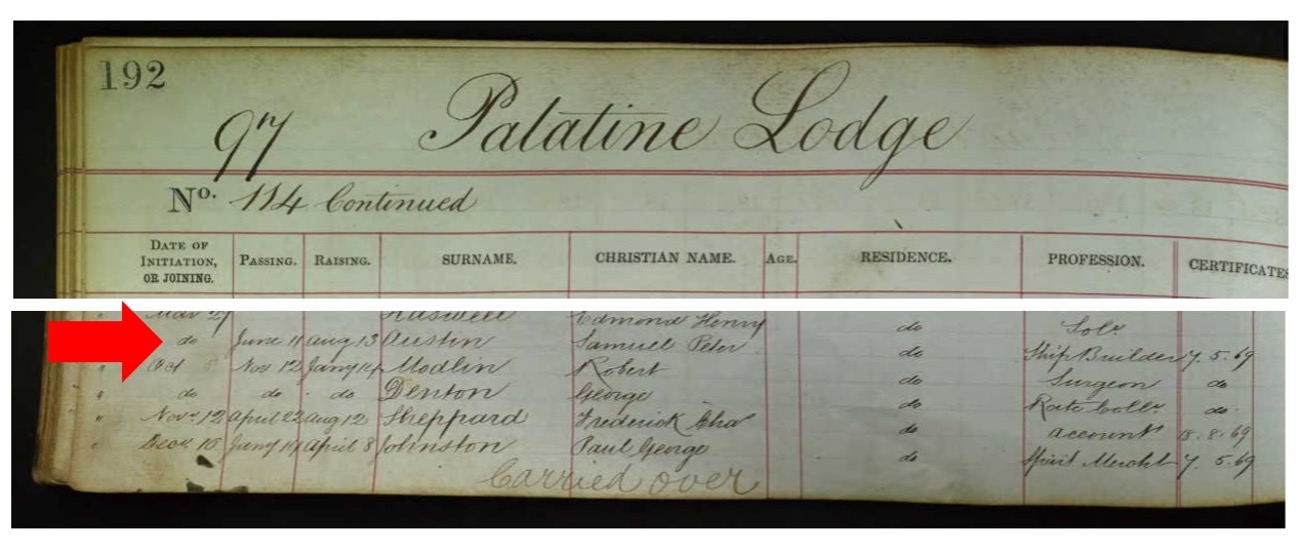
The entry for Samuel Peter Austin in Palatine’s Membership Record
WBro (Worshipful Brother) Samuel Peter Austin Jnr. was born in Monkwearmouth, Sunderland, on 28th June, 1842; the son of Samuel Peter Austin Snr. (1808-1863) and his wife, Julia Ann Moore. Samuel was the firstborn of eight siblings; four brothers and three sisters, and educated at St Alban's Grammar School. He went on from there to study at the College du Hâvre, France.
In 1851, Samuel, his parents and siblings, were living at 16 John Street, Bishopwearmouth and in 1861 are listed as living at 1 Esplanade; a grand house just off Burdon Road and close to where the Wearside Masonic Temple is today.
In 1881, Samuel, aged 38, and his wife Marion Yorke Austin, aged 39, from Camden Town, are recorded as living at 12 Thornhill Crescent, Bishopwearmouth with their daughters, Sybel (aged 6), Evelyne (aged 10 months) and his brother Stanley (aged 24). Then prior to 1891, he, his wife, daughters and four servants moved to Thornholm Road, Bishopwearmouth.
Samuel’s Shipyard, S.P. Austin and Son, Wear Dock Yard, was by no means the largest shipyard on the Wear but, for many years, was the most conspicuous. Most of its activities were centered on the riverbank below Bridge Crescent and Panns Bank. The yard presented an interesting spectacle for those looking over the River Wear Bridge and the remnants of one dock can still be seen there today.
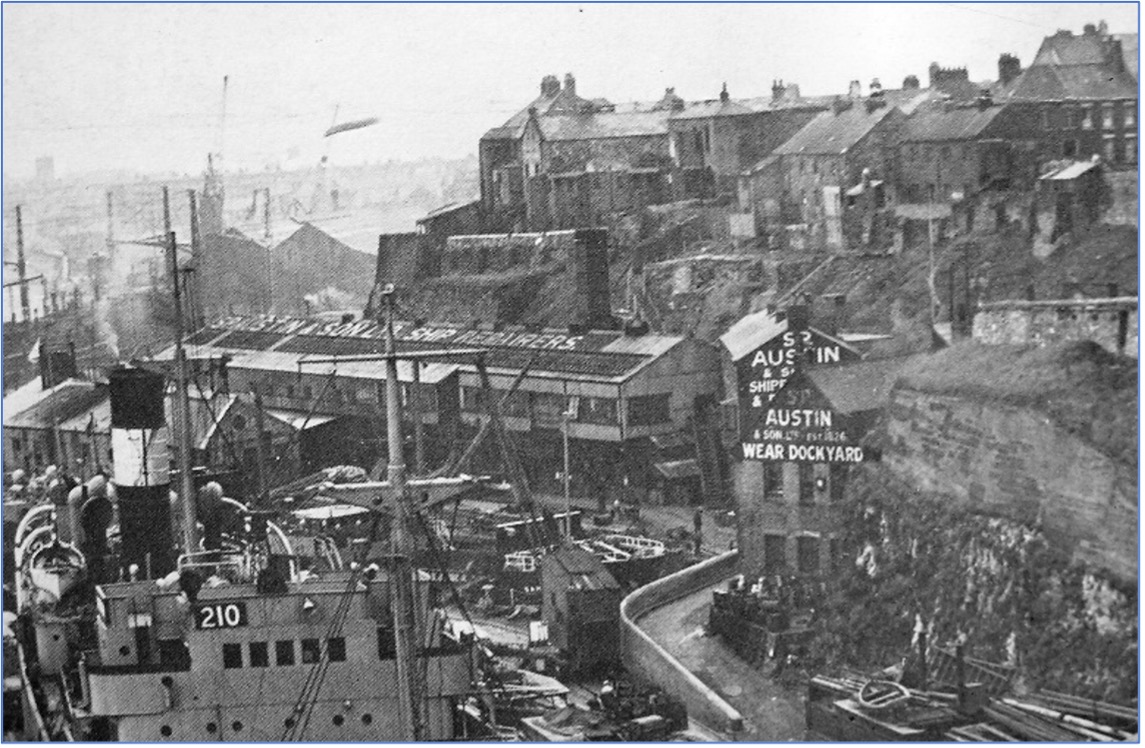
A view from the bridge of S.P. Austin & Son Ltd, Wear Dockyard.
Samuel Peter Austin’s grandfather, Peter Austin (1769-1863), founded the Nova Scotia Shipyard at Sandy Point, Monkwearmouth, in 1826. Wooden ships were basically hauled out of the river onto a slipway using a horse driven capstan, repaired, then launched back into the river. When Samuel Peter Snr. joined his father, they continued to repair ships but started to build wooden brigs for the coal trade. These brigs became popular and many were used to transport coal around the UK and into London.
When his father, Samuel Peter Snr. retired in 1866, Samuel Jnr. moved the yard to the south bank of the river. In those days, the south bank was a busy place where wooden ships were built in yards stretching right along the riverbank next to Low Row. Then in 1867 Samuel’s father died, and he, aged twenty-five, and his brother, Stanley, took full control of the yard.
In 1869 the last wooden ship was launched from Austin’s and, from 1870 onwards, other yards were purchased extending Austin’s Dockyard, from a fellow Palatine Brother, Sir William Allan’s, Scotia Engine Works to Panns Bank.
During that time major work was completed, increasing the capacity to construct three iron ships and to continue ship repair in a newly constructed dry dock. In 1903, to accommodate the ever-increasing size of ships, they constructed their famous pontoon, capable of raising a 400 foot, 7,000 tons ship, out of the water. The first ship to occupy the pontoon was the newly constructed Wear-built Cunard Lines S.S. Brescia, which had her hull painted before sailing to her owner.
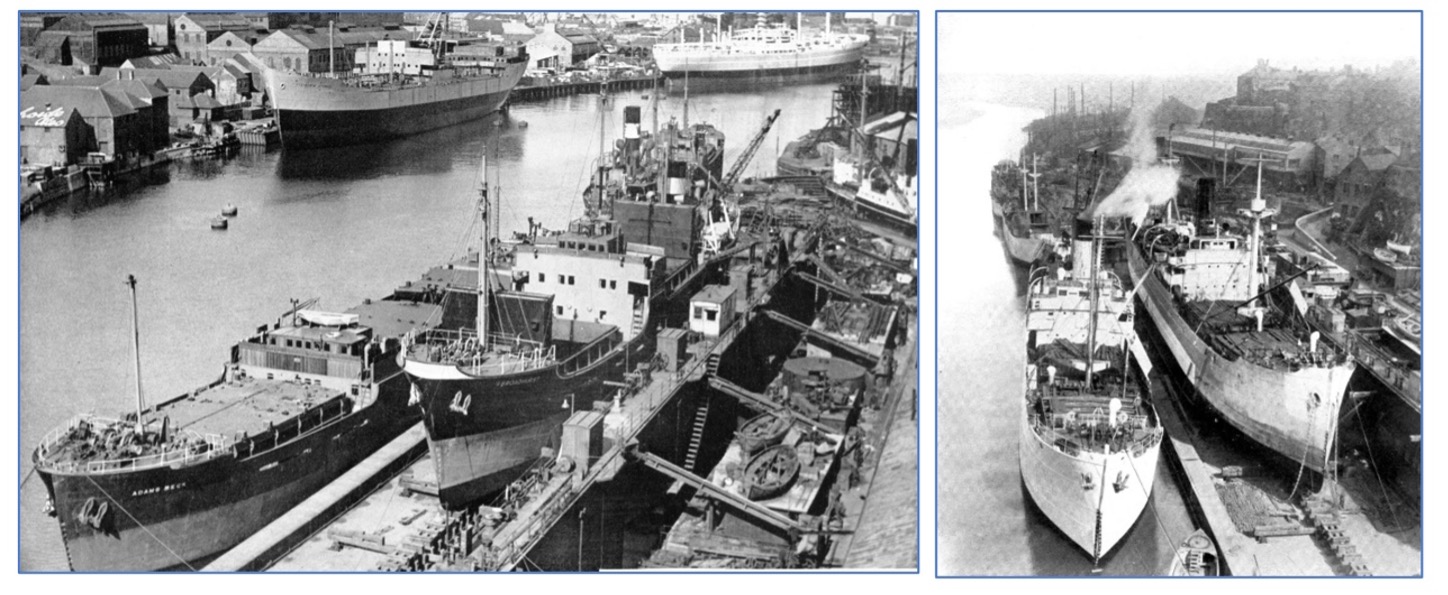
Two photographs showing a ship raised out of the water on Austin’s famous pontoon.
Aside from being the Chairman of S. P. Austin and Son, Samuel led an active public life. He was a director of the Seaham Harbour Dock Company, of the Sunderland and South Shields Water Company and Vice-Chairman of the Sunderland Gas Company; served on the School Board, Board of Guardians, and as Income Tax Commissioner; was a Justice of the Peace for County Durham, for the Borough of Sunderland, for the Liberty of Ripon, and for the West Riding of Yorkshire. He also contested Sunderland for the Conservatives in 1885 and was High Sheriff of County Durham in 1898.
WBro Austin was a committed Christian, was a representative on the Central Council of Diocesan Conferences and the House of Laymen, York, and also Hon. Treasurer of the Ripon Clergy College.
Samuel died at his home, Holin Hall, Ripon on 25th March, 1925, aged 82. He was buried a St. John the Baptist Churchyard, Harrogate and as a highly respected member of the congregation, a plaque was hung in Ripon Cathedral commemorating him and his wife.
In 1954 S.P. Austin & Son merged with William Pickersgill & Son to become Austin and Pickersgill’s, but unfortunately, on 7th December, 1988, the UK Government announced that A&P would close, ending a proud history of shipbuilding on the River Wear.
References
Palatine History, Volume 1
Booklets produced by A&P The Sunderland Site Page 105 (searlecanada.org)
